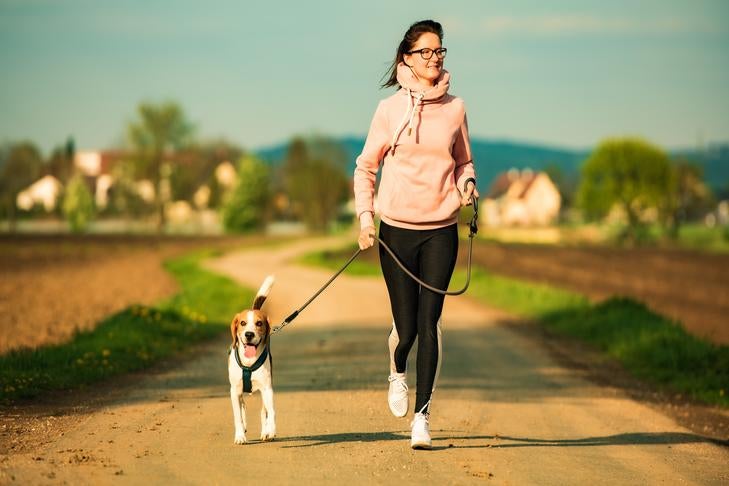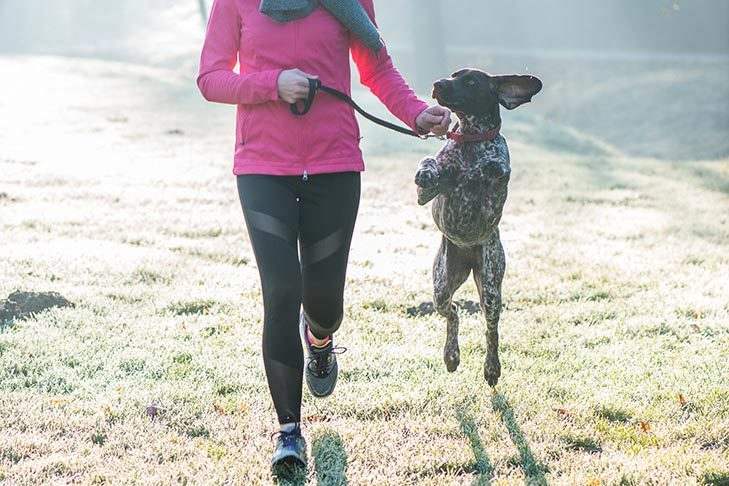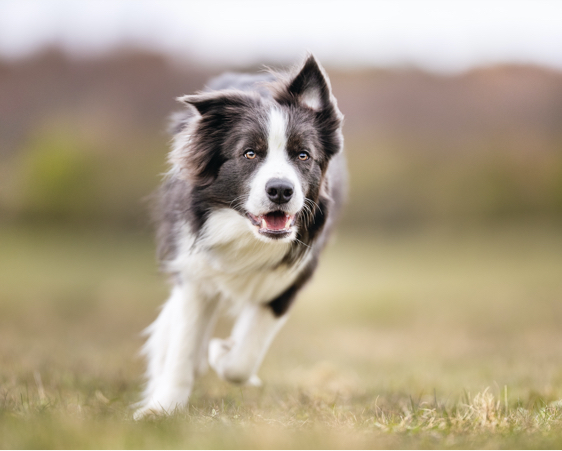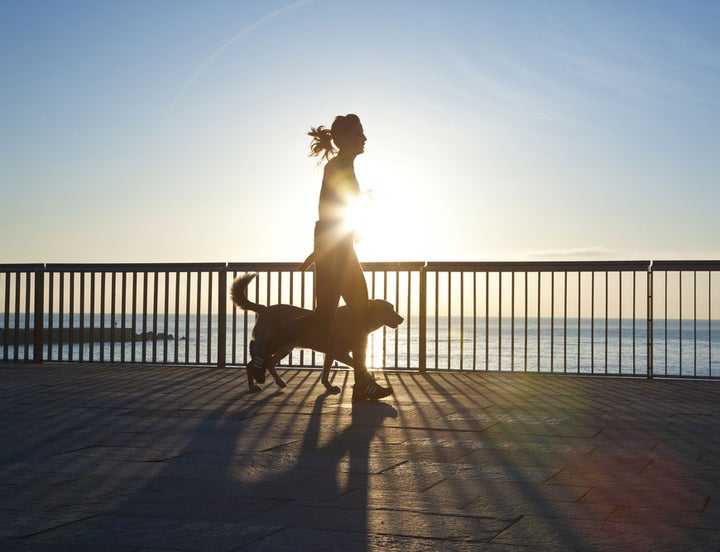Dogs can be the ultimate running buddy. They have boundless enthusiasm, plenty of energy, and love to spend quality time with you. Running is also a great workout for most dogs, with a wealth of physiological and psychological benefits. Cardiovascular exercise helps them get their heart rate up, improve muscle tone, burn off extra energy and follow their natural instinct to really go for it. Some dogs are natural running partners, but others struggle to understand that they are there to run with you and not the other way around. In short, they need training. The good news is that the training process will still be a lot of fun for both of you.
Follow these guidelines to make your pooch the perfect running partner.
Physical First

Before you start your training program, make sure your dog is suited to long-distance running. You must get your pet a checkup before you take her out for a trot. an exercise-specific checkup should have an orthopedic focus to determine any hereditary issues. For example, your vet will be able to tell if your dog’s ball-and-socket joints are prone to hip dysplasia. Be specific with the vet about your training plans so she can best assess your pooch’s preparedness.
Also, be aware that running is generally not safe for puppies, as their bones are still growing. For most breeds, wait until the dog is about 1.5 years old.
Start Slow: Use Intervals of Walking And Running
The best way to teach dogs any new behavior is to begin gradually. Incorporate short periods of running into your regular walks, and make the running intervals longer over time. The goal is to train your dog to stay right by your side and keep up with your pace. Some dogs will try to go way too fast, while others will be lagging behind. Use consistent verbal cues that let him know when it’s time to run. As well as when it’s time to slow down and walk again.
Building Endurance

Now that they know to stay at your side and match your pace, it’s time to get your dog in shape. Just as humans need to build strength and endurance slowly, so does your dog. Building up the pace slowly will allow his muscles and joints to adapt to the new activity without strain. As your dog gets more consistent with keeping up with you, increase the length of the running intervals. Start by adding small stretches of running into your walks. Then, on each subsequent walk, gradually increase the portion of your time spent running and decrease the portion spent walking. This process is something to really enjoy. You’ll begin to notice your dog is having a good time while running and has no problem staying by your side.
Speed Cues
Now that your dog is politely walking at your side, it’s time to speed things up. When you’re out for a walk, it’s handy to have a cue, such as “let’s go”, that tells your dog it’s time to move on and get walking. A different cue, like “get running” or “move it”, can be used to tell your dog it’s time to pick up the pace. The more information you can give your dog about what you expect, the better they will be at responding appropriately.
Provide plenty of positive reinforcement when your dog responds to the cues correctly, which can be with praise, encouragement, or even treats. Over time, he’ll understand that the task is to trot alongside and be your running buddy.
Tips For A Safe And Enjoyable Run

1.Warm up your dog before you run and cool them down when you’re finished by walking for several minutes.
2.Be aware of weather conditions. Dogs can’t handle heat and humidity as well as humans can.
3.Carry water on your walks and offer it to your dog regularly.
4.Give your dog frequent breaks, so he can recharge, go to the bathroom, and enjoy his surroundings.
5.Only allow your dog to run off-leash where it’s safe and legal, and only if he has a reliable recall amid distractions.
6.Watch your dog for signs that they’ve had enough, such as excessive panting or lagging behind you. Dogs may run to please their owner, even when they want to stop.
